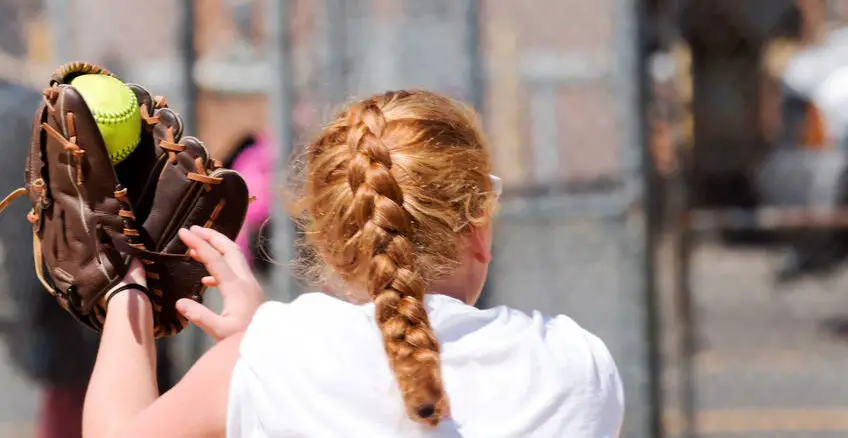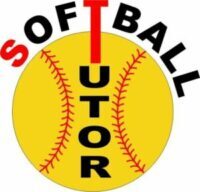
Softball throwing transitions are critical to the success of a play and can be the difference between a safe and an out when getting runners out on the bases. Receiving a throw and fielding a ball are going to have different method of transition and fielding can have many methods. How the ball is fielded will also have an effect on the most efficient transition to throwing. The key is to position the body before receiving the ball to essentially set up for the throw and to bring the ball smoothly from glove to throwing.
For example, when fielding a fly ball, the best way is to field in on the throwing side shoulder and in front so that the transition goes directly into throwing position. When receiving a throw, it is best to position so that it is received more on the throwing side to again give with the ball, turning it into the preparation for a strong and accurate throw. The less movement that is required, the quicker the transition will be which is much more efficient if we can make the reception of the ball a part of the throw.
Softball Throwing Transitions
The Pivot
This is a quick throw when there is no time for much movement and where the power is more generated from the upper body. It is when the fielder is relatively close to the receiver who is on the throwing side of the body. The player, without taking a step, twists her hips and pivots on the balls of her feet until her glove side shoulder faces the target. As this happens the throwing hand is moving into the launch position. The throw is completed with a rotation of the shoulders to throw at the target. As with any throw it is important to keep the eyes on the target and complete the rotation to throwing for accuracy. This throw is generally used by the second baseman to start a double play or a quick throw from shortstop to third. This is an infield throw that all infielders should practice and is of no use to outfielders.
Jump Shift
This again is a quick throw that requires more power for distance than the pivot throw. The player fields the ball off her throwing side foot, jumps quickly from both feet, and twists to the throwing side so that her non throwing shoulder and foot are on the same side to where the throw is going. The throwing side foot lands slightly before the glove side foot and the throw is made while pushing off the throwing side foot and stepping forward onto the glove side foot in the direction of the receiver. A jump shift permits a more forceful throw than a pivot throw. As with the pivot, it is a throw that is used by infielders and should be practiced regularly. It would be used when the fielder is receiving a ball and throwing in the direction of to their throwing side
Drop Shift
This transition is used when the fielder needs to rotate more than a quarter turn and less than a half turn to throw to their target. She fields the ball, plants her weight on her glove side leg and drops her throwing side foot back behind the left. She shifts the weight onto her throwing side foot and steps towards the receiver. Then she transfers her weight onto her glove side to throw the ball. The transfer and velocity will depend on the distance she is from the receiver.
Weight Shift
The player without taking a step, simply shifts her weight to her throwing side foot and then to her glove side foot making a quick throw. It’s almost like a rocking motion. The fielding literally becomes a part of the throw. This is one of the benefits of having the feet slightly staggered in the fielding position with the glove side foot forward. It is mostly used when making a quick throw to the glove side of the body. This might be the shortstop to second, the second baseman to first or third base to second if she is close enough. It could also be used by the pitcher when fielding a bunt if her shoulders are in the best position.
Running Step
This throw is more common with the pitcher than with other infielders. It can be executed using an overhand throw as in the third baseman fielding and throwing to first or and underhand toss when the player is closer to the receiver. It is a done when there is no time to set up and the player is moving in the direction of the receiver. It is also done by the pitcher sometimes to avoid an overhand throw to first base.
Crow Hop
This throw gives the thrower the quickest transition to throwing when fielding in the direction of the throw. The other advantage of this throw is that it gives the most power as there is momentum added in the transition such as from the outfield fielding a grounder or fly ball. The player places her weight on her forward foot as she fields the ball. quickly brings the the throwing side foot to the heel of the glove side foot with a quick hop, and then transfers the weight forward again with a step on the glove side foot in the direction of the throw. The sequence is lean, hop, close and step to throw. This throw takes practice and can be difficult for fielders to get. Once they do though, it will become natural.
Run Through
This is a very useful throw for fielders who are further away from their target and do not have time to set up to throw. It is used mostly by the third base player when fielding a slow roller before their throw to first base and even more so by outfielders throwing to the infield. The fielder runs towards the ball, and fields it on their glove side just outside their foot. As she fields the ball she brings the ball up while moving in the direction of the target and incorporating the crow hop as she is moving. I have used this method successfully with outfielders who are having trouble fielding. Of course there needs to be good back up as well.
Positioning the body for a quick transition from catch to throw
It is a good idea to position the body to give the receiver the best opportunity for a subsequent throw however we know that is most times not possible. This is why these throwing transitions are important for all fielders to learn in relation to their position. Practice is critical in to make these fielding to throwing tools natural and easy for the fielders.
